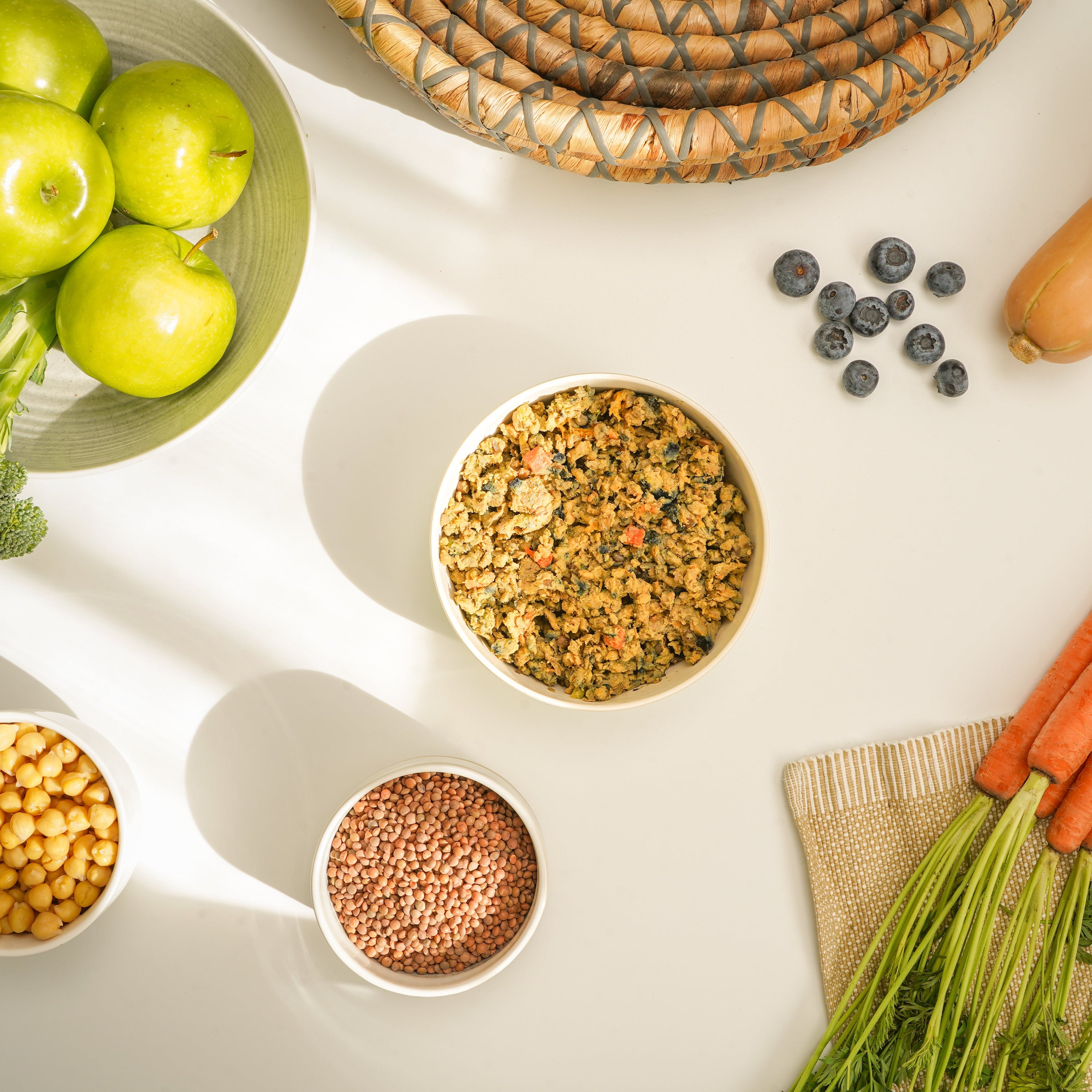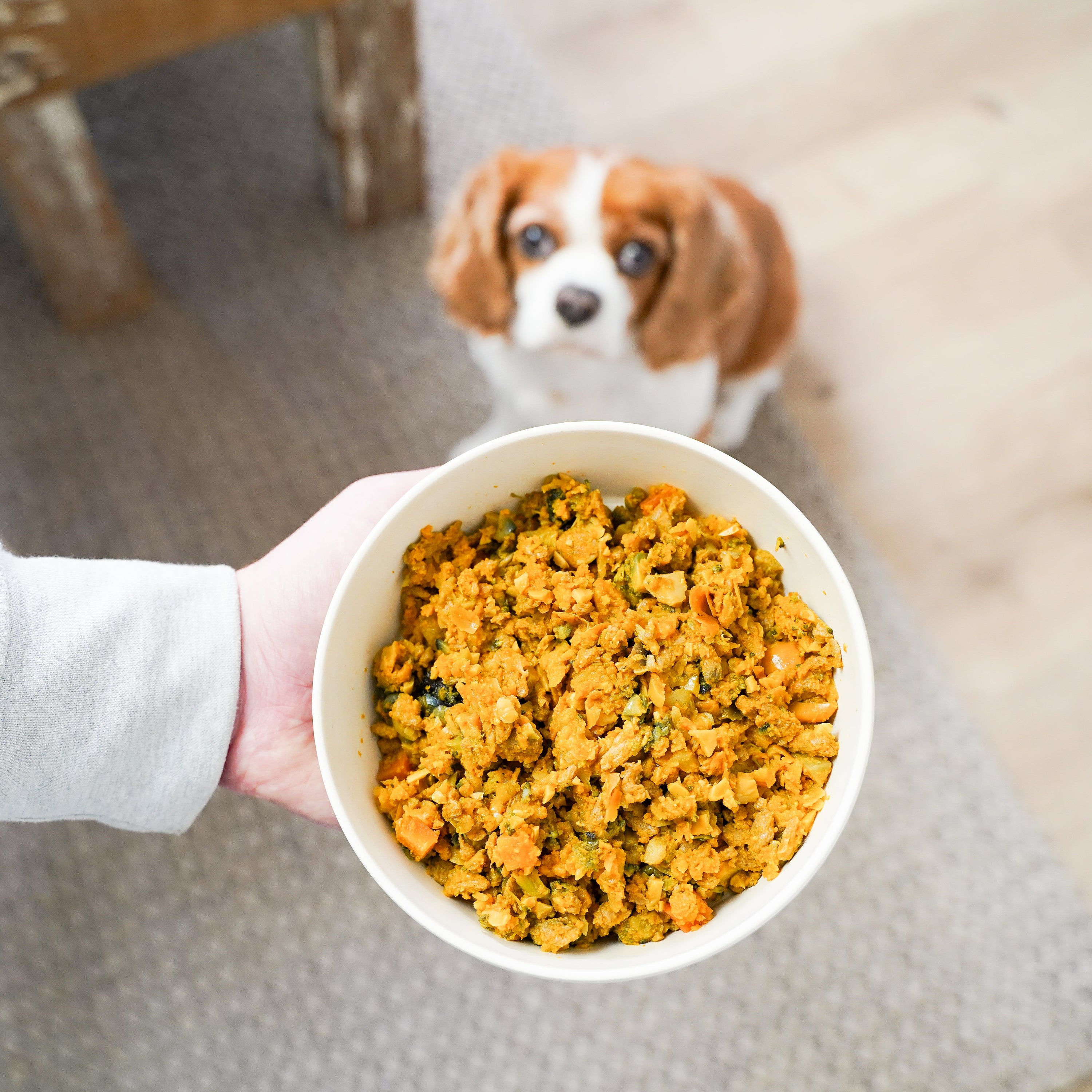

Bringing home a puppy? What to look for when choosing a puppy-approved diet
There’s nothing quite like those first few weeks of having a puppy. The zoomies, the cuddles, the chaos—it’s all part of the magic. Whether you’re a first-time pet parent or a seasoned one, deciding what to feed your puppy can feel overwhelming. And what your family fed their puppy over a decade ago might no longer be the healthiest option out there today.
So what does a puppy need to thrive? How do you make sure they're loving their meals while getting all the nutrients they need?
Let’s break down the key elements behind a well balanced puppy diet:
1. High Quality Protein = Building Block
Protein is the building block of muscle, bone, skin, and immune function—everything your pup is rapidly developing.
What to aim for:
-
Minimum 22.5% protein (dry matter) according to AAFCO standards for growth
-
Many high-quality diets offer 30–40% protein (dry matter)
Did you know? Root & Tail High Protein Recipe delivers min. 43% protein on a dry matter basis (15% As Fed), using a blend of plant-based and whole food sources like chickpeas, lentils, oyster mushroom proteins and nutritional yeast. This is higher than most diets out there, even meat-based diets.
2. Fat = Energy + Brain Fuel
Puppies have boundless energy, and fat is an important energy source. Fat also delivers essential fatty acids like DHA/EPA, which support brain and eye development.
What to aim for:
-
Minimum 8.5% fat (dry matter) per AAFCO standards for growth
-
Look for sources rich in DHA/EPA, especially from algae or fish oil
Did you know? Root & Tail recipes use marine algae oil, a clean, sustainable source of DHA and EPA, for cognitive and visual development—without relying on fish.
3. Calcium and Phosphorus = Bone Builders
Getting this balance right is critical. Too much or too little calcium can cause skeletal issues in growing dogs, especially in larger breeds.
What to aim for:
-
Calcium: Approximately 1.2% to 1.8% dry matter basis
-
Phosphorus: Approximately 1.0% to 1.6% dry matter basis
-
Calcium-to-Phosphorus ratio: Between 1:1 and 1.8:1
Root & Tail High Protein Recipe has a balanced Calcium-to-Phosphorus ratio of 1.53 % to 1.14%, well within this recommended range.
4. Essential Amino Acids + Complete & Balanced
When reading the label, make sure to verify that your puppy's food is Complete & Balanced, and carries a statement that says it meets the nutritional levels established by AAFCO Dog Food Nutrient Profiles for All Life Stages including growth of large size dogs (70lbs or more as an adult). This also means that the food has all the 10 essential amino acids that your puppy needs.
Another key trusted sign is when your puppy's food is formulated by a board-certified vet nutritionist, who's licensed to formulate foods for dogs and provide nutritional consultations.
All Root & Tail recipes are formulated by one of Canada's few board-certified vet nutritionist, Dr. Sarah Dodd, to be complete & balanced and meet the nutritional requirements for growth of a puppy.
5. Last but not Least: Digestibility and Gut Health
Young tummies are sensitive. Choose recipes that are fresh, with whole food ingredients and natural fibres to help your puppy develop a healthy gut microbiome for many years to come.
Just as you would not want to feed a young child cereals and protein bars every day, consider this when you're thinking about feeding kibbles to a puppy. Kibbles, while may contain "premium" ingredients, are ultimately highly processed. Some research has shown they might be contributing to the rise in dog food allergies.
Considering Root & Tail High Protein Recipe? Here's a side-by-side comparison with a leading Canadian "Puppy Recipe" Kibble:

Feeding your puppy is about setting them up for a long and healthy life. From strong bones to fully developed brains, the right nutrition lays the foundation for your pup. If you have further questions, feel free to reach out to us or Ask our Vet Nutritionist. We're here for you and your pup!


